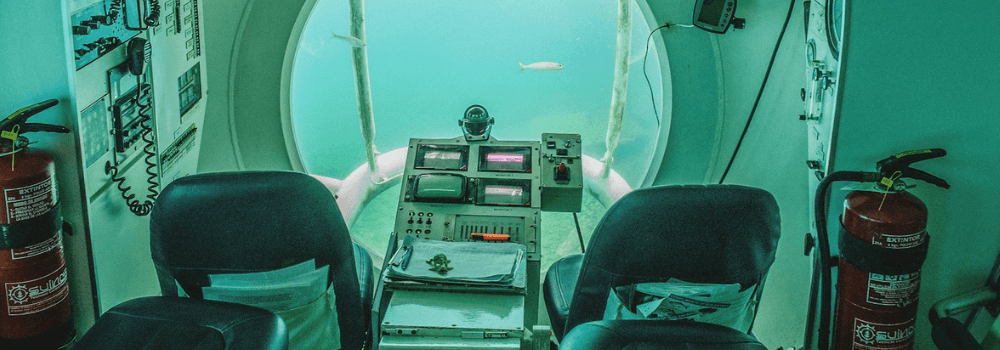Since its widespread use in the Second World War, the submarine has become a common concept in naval warfare, and whilst few members of the general public have been in a submarine, all of us have seen them in film and TV.
A few hundred years ago the submarine was a fantastic concept, almost unthinkable, and certainly difficult to build. Many different people throughout history would design submarines and improve upon the work of those who had tried and failed. In the 20th Century, the submarine as we know it was invented, and was crucial in many of the most important conflicts of the century.
History of The Submarine:
Early Concepts of The Submarine
The history of the submarine goes back to the 1500s when Leonardo DaVinci first conceptualised a boat that could sail underwater and sink other ships. Da Vinci never went ahead with his submarine design because he was afraid of the destructive power his invention could unleash on the world.
The first practical submarine was built in 1620 by Cornelis Drebbel under the employ of King James I. A leather-covered 12-oar rowboat, Drebbel’s submarine was reinforced with iron to withstand water pressure, and was functional, submerged to a depth of fifteen feet beneath the River Thames. No further models were commissioned for the navy.
The First Military Submarine
The first submarine used for military purposes was The Turtle, deployed in the American revolution. Built in 1775 by David Bushnell, The Turtle Submarine was 7 feet tall and 5 and a half feet wide, shaped like a walnut. It was designed to be operated by one man and could be submerged up to 20 feet deep for up to half an hour.
This submarine design used pitch-covered oak and worked via a series of brass pumps that took in and expelled water. Its first engagement was to try to break the blockade of British ships at New York harbour. The pilot was supposed to use The Turtle to reach the line of ships and fasten a 150-pound bomb to the keel of one, thus breaking the line. The attempt was unsuccessful.
The Advent of Steam Power
Early in the 1880s, Swedish inventor Thorsten Nordenfeldt built the first steam-powered submarines. The Nordenfeldt III could submerge to a depth of 50 feet and had a range of 14 miles. A steam engine powered the submarine on the surface and was shut down to dive. Nordenfeldt III also had twin torpedo tubes and was the first vessel to fire an underwater torpedo.
Submarine Developments in the Early 20th Century
Britain and Germany were engaged in a naval arms race at the start of the 20th Century, both in terms of traditional surface ships and submarines. The submarine would show its strategic value during the First World War, with German submarines easily sinking both battleships and passenger vessels, often with a single torpedo. They became more powerful as the war progressed, with the model U-53 reaching 200 feet in length, able to carry two medium-calibre deck guns with a vastly superior range to other ships.
Submarines in World War II
When Hitler came to power, he immediately began rearming the German navy and focused on developing more powerful submarines, resulting in the infamous U-boat. The U-300 could reach 19 knots while fully submerged.
Nuclear Submarines
Another naval arms race rapidly escalated between the US and Russia during the Cold War. New submarines could travel much further and stay submerged for longer than their WWII predecessors, making them far more dangerous. Equipped with ballistic missiles and nuclear warheads, these submarines would often stay at sea for weeks or even months, waiting tensely for orders and scanning the ocean for any sign of enemy ships.
Nuclear submarines are still in use today, most famously in the UK Trident system. Submarines are now used for exploration and are a vital part of the Marine sector.
Learn more about how the Navy has changed since World War II, or read about how Marine travel has changed in the last hundred years.





